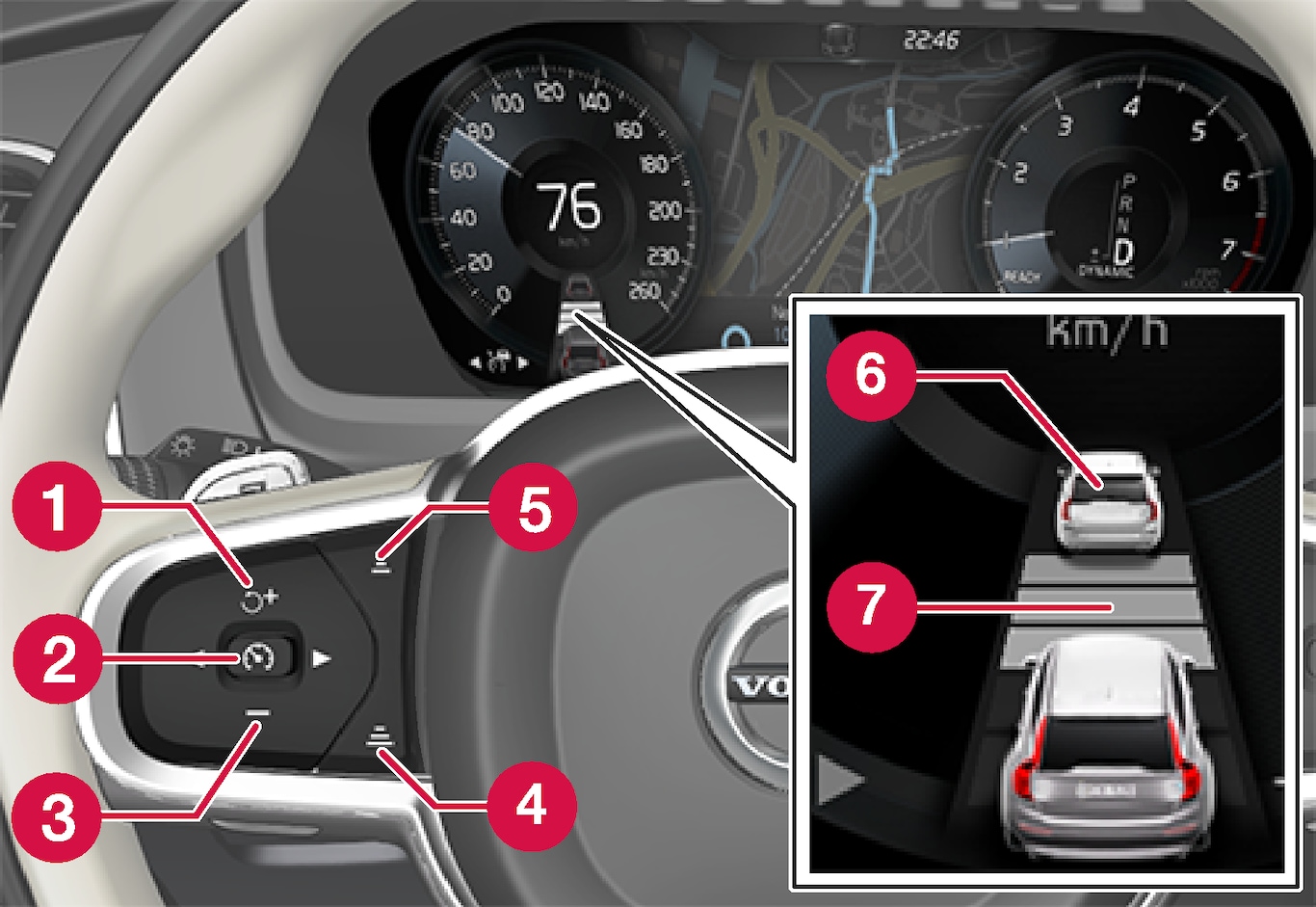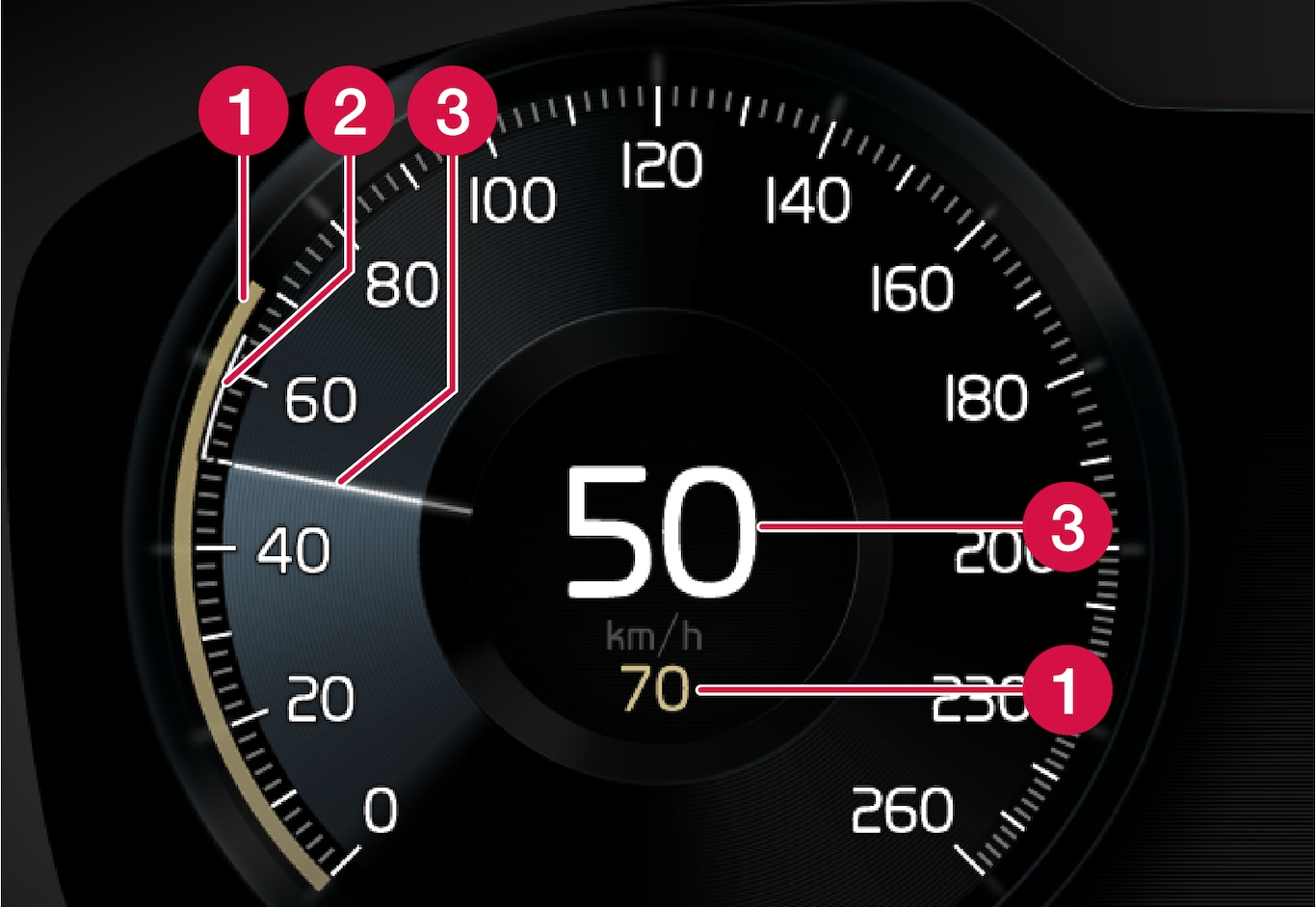Adaptive Cruise Control helps provide a more relaxed driving experience on long trips on highways or long, straight roads with even traffic flows.

The driver sets a speed and a time interval to the vehicle ahead. If the camera/radar sensor detects a slower-moving vehicle ahead, your vehicle's speed will be automatically adapted according to the set time interval to that vehicle. When there are no longer slower-moving vehicles ahead, the vehicle will return to the set speed.
Warning
- The Adaptive Cruise Control function is supplementary driver support intended to facilitate driving and help make it safer – it cannot handle all situations in all traffic, weather and road conditions.
- The driver is advised to read all sections in the Owner's Manual about this function to learn of its limitations, which the driver must be aware of before using the function (see the link list at the end of this article).
- Adaptive Cruise Control is not a substitute for the driver's attention and judgment. The driver is always responsible for ensuring the vehicle is driven in a safe manner, at the appropriate speed, with an appropriate distance to other vehicles, and in accordance with current traffic rules and regulations.
Note
Adaptive Cruise Control regulates speed by accelerating and braking. It is normal for the brakes to emit a slight sound when they are being used to adjust speed.
Adaptive Cruise Control always attempts to regulate speed smoothly. The driver must apply the brakes in situations requiring immediate braking. For example, when there are great differences in speed between vehicles or if the vehicle ahead brakes suddenly. Due to limitations in the radar sensor, braking may occur unexpectedly or not at all.
Adaptive Cruise Control is designed to follow a vehicle ahead in the same lane and maintain a time interval to that vehicle set by the driver. If the radar sensor does not detect a vehicle ahead, it will instead maintain the speed set by the driver. This will also happen if the speed of the vehicle ahead exceeds the set speed for your vehicle.
- Adaptive Cruise Control can follow another vehicle at speeds from a standstill up to 200 km/h (125 mph).
Warning
- Adaptive Cruise Control is not a collision avoidance system. The driver is always responsible and must intervene if the system fails to detect a vehicle ahead.
- Adaptive Cruise Control does not brake for people or animals and does not brake for small vehicles, such as bikes and motorcycles. Similarly, it does not brake for low trailers, oncoming, slow-moving or stationary vehicles and objects.
- Do not use Adaptive Cruise Control in demanding situations, such as in city traffic, at intersections, on slippery surfaces, with a lot of water or slush on the road, in heavy rain/snow, in poor visibility, on winding roads, or on on/off ramps.
Important
Overview
Controls

 |  : Activates Adaptive Cruise Control from standby mode and resumes the set speed : Activates Adaptive Cruise Control from standby mode and resumes the set speed |
 |  : Increases the set speed : Increases the set speed |
 |  : From standby mode - activates the Adaptive Cruise Control and stores the current speed : From standby mode - activates the Adaptive Cruise Control and stores the current speed |
 |  : From active mode - deactivates/switches the Adaptive Cruise Control to standby mode : From active mode - deactivates/switches the Adaptive Cruise Control to standby mode |
 |  : Reduces the set speed : Reduces the set speed |
 | Increases the time interval to the vehicle ahead |
 | Reduces the time interval to the vehicle ahead |
 | Target vehicle indicator: ACC has detected and is following a target vehicle using the set time interval |
 | Symbol for time interval to the vehicle ahead |
Note
Instrument panel

 Set speed
Set speed Speed of the vehicle ahead.
Speed of the vehicle ahead. The current speed of your vehicle.
The current speed of your vehicle.
See "Adaptive Cruise Control symbols and messages" for examples of different combinations of symbols depending on the traffic situation.